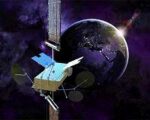China’s commercial space sector has taken a major step forward in propulsion capability. Beijing Tianbing Technology Co., also known as Space Pioneer (天兵科技), has successfully tested a liquid rocket engine producing 836 tons of thrust—setting a national record for kerosene-liquid oxygen (kerolox) engines and edging closer to the performance class of NASA’s Saturn V F-1 or SpaceX’s Raptor clusters.
Record-Breaking Engine Test Details
The test was conducted in March 2024 at a facility in Tongchuan City, Shaanxi Province. The engine—named “TH-31” (天鹊-31)—ran for 20 seconds and achieved a peak sea-level thrust of 8.16 meganewtons (MN), or approximately 836 metric tons. This marks the highest thrust ever recorded for a Chinese-developed LOX/kerosene engine.
According to official statements from Tianbing Technology and corroborated by Chinese state media such as CCTV and Global Times, the TH-31 is designed with reusability in mind. It uses a full-flow staged combustion cycle—a highly efficient but complex design architecture previously adopted only by advanced programs like SpaceX’s Raptor or Russia’s RD-270 experimental efforts.
The TH-31 surpasses China’s previous high-thrust liquid engines such as the YF-100K (~130 tons) and even the upcoming YF-130 (~500 tons) being developed for the Long March 9 super-heavy rocket.
Technology Profile: TH-31 Engine Architecture
The TH-31 engine is notable for its adoption of full-flow staged combustion (FFSC), which routes both oxidizer-rich and fuel-rich preburners through separate turbopumps before combining them in the main combustion chamber. This allows higher chamber pressures and specific impulse while improving thermal margins—critical for reusability.
- Fuel: Kerosene (RP-1 equivalent)
- Oxidizer: Liquid Oxygen (LOX)
- Cycle: Full-flow staged combustion
- Thrust: ~8.16 MN at sea level
- Status: Ground-tested; flight version TBD
The FFSC cycle is extremely rare due to engineering complexity. Besides Space Pioneer’s TH-31, only SpaceX’s Raptor (methalox) has flown using this cycle. The Soviet RD-270 used FFSC but never flew operationally.
Strategic Implications for China’s Launch Capability
The successful test of the TH-31 positions Tianbing Technology—and by extension China’s broader commercial space sector—as capable of building engines suitable for heavy-lift and potentially crewed orbital missions. The company stated that clusters of these engines will power future large-scale reusable launch vehicles under development.
This aligns with China’s long-term ambition to field reusable rockets akin to Falcon Heavy or Starship-class vehicles. While state-owned CASC focuses on Long March series upgrades like LM9B and LM10, private firms like Tianbing are rapidly iterating toward vertical landing boosters using grid fins and throttleable engines.
If matured into flight hardware, clusters of TH-31 could support payloads exceeding dozens of metric tons to LEO—comparable to Delta IV Heavy or Falcon Heavy class missions—with potential reusability reducing per-launch costs significantly.
Tianbing Technology: From Start-Up to Strategic Player
Tianbing Technology was founded in 2015 and has quickly emerged as one of China’s most capable private aerospace firms. It gained attention after launching its Tianlong-2 rocket in April 2023—the first Chinese private orbital launch using kerolox propulsion that successfully reached orbit on its maiden flight.
The company has received significant venture funding from investors including Matrix Partners China and ZhenFund. Its roadmap includes:
- Tianlong-series medium-lift rockets (TL-1/2/3)
- A heavy-lift reusable launcher powered by TH-series engines
- Vertical landing demonstrators akin to Falcon 9 boosters
Comparative Landscape: How Does TH-31 Stack Up?
The TH-31’s thrust places it among the most powerful single-chamber hydrocarbon-fueled rocket engines ever built:
| Engine | Nation | Chemistry/Cycle | Thrust (MN) |
|---|---|---|---|
| F-1 (Saturn V) | USA | Kerosene/LOX – gas generator | 6.77 MN |
| Soviet RD-170/RD-171 | USSR/Russia | Kerosene/LOX – staged combustion | 7.55 MN / 7.90 MN* |
| SLS RS-25 cluster x4* | USA | LH2/LOX – staged combustion* | *~8 MN total* |
| SX Raptor v3 (clustered) | USA | Methane/LOX – FFSC* | *~7–8 MN per booster* |
| Tianbing TH–31 | China | Kerosene/LOX – FFSC | 8.16 MN |
Caveats and Next Steps Toward Flight Readiness
This was a static ground test; no flight article exists yet for the TH–31 engine or its associated launcher platform. Key milestones still pending include:
- Sustained-duration firing tests (>100 seconds)
- Turbopump endurance qualification under thermal cycling loads
- Dynamically throttled firings across altitude profiles via vacuum variants
No public timeline exists yet for when this engine will be integrated into an actual vehicle or conduct hot-fire stage tests on integrated booster stages. However, given China’s accelerating pace in both state-led and commercial space sectors—and recent successful hop tests by other firms like iSpace—it is plausible that suborbital demonstrators could emerge within two years if funding continues uninterrupted.
A Leap Toward Reusable Heavy-Lift Capability?
If fully developed into an operational system with clustered deployment on reusable boosters, the TH–31 could become central to China’s ambitions for rapid-response orbital logistics, LEO megaconstellations deployment, or even lunar cargo missions under dual-use civil-military doctrine frameworks.
This would mark a shift from reliance on traditional expendable Long March platforms toward more agile architectures resembling Western commercial models—potentially disrupting global launch economics if cost-per-kilogram targets are met through reuse cycles exceeding five flights per core stage.









